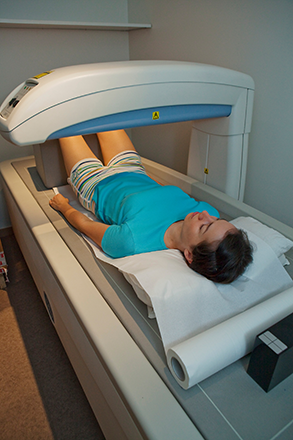 GHC’s Diagnostic Imaging Department provides several diagnostic services, including:
GHC’s Diagnostic Imaging Department provides several diagnostic services, including:
- X-ray
- Ultrasound, including MSK and Vascular
- Bone Mineral Density Tests
- Echocardiography
- Mammography (including OBSP)
- Electrocardiogram (ECG)
- Holter Monitor
Who Can Access This Service?
Open to the general public. Appointments are by provider referrals.
Booking An Appointment
Patients can make an appointment as long as they have a requisition from a healthcare provider. X-Rays are offered on a walk-in basis (with a referral from a Provider), or patients can make an appointment.
Service Descriptions
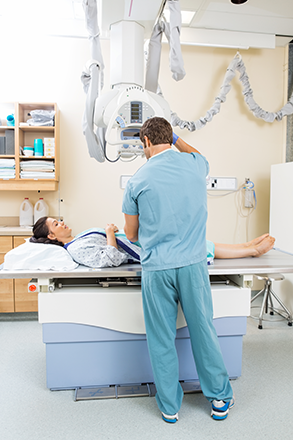
These tests are quick and painless. When performing an X-ray, X-ray beams pass through the body and are absorbed by the body structures such as bones. This then produces an image on a radiograph. This imaging test is also used to produce pictures of internal organs.
What are X-rays used for?
X-rays are useful in identifying fractures and dislocations of bones and joints, injury or damage from infection, arthritis, abnormal bone growth and osteoporosis, healing and alignment of fractures after treatments and detecting fluid build-up.
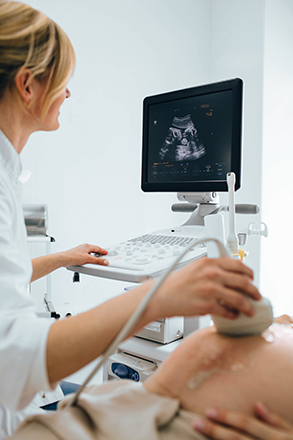
An ultrasound, also known as sonography, is a medical imaging method that uses sound waves to form images of the body’s internal organs and tissues.
Most ultrasound examinations are done using an ultrasound device such as a small handheld probe, which hovers over the outside of the body and creates an image or video for display on a computer.
Vascular Ultrasound
Vascular ultrasound uses high-frequency sound waves to generate images of blood flow within the veins and arteries. Physicians use this type of ultrasound to detect blockages in the arteries and veins and identify blood colts.
Bone Mineral Density
A bone mineral density (BMD) test measures bone density, strength, and how much calcium and other types of minerals are in an area of the bone. This test helps physicians detect osteoporosis.
Osteoporosis is a disease of the bone characterized by low bone density and deterioration of bone tissue, which weakens the bones to the point where they can break easily.
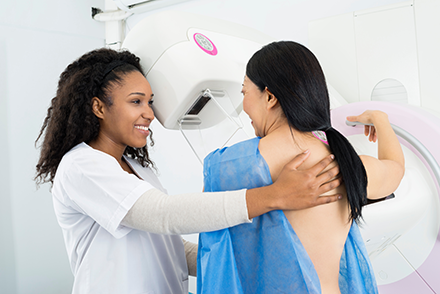
A mammogram is an X-ray picture of the breast that examines breast tissue and evaluates breast health. Doctors use a mammogram to look for early signs of breast cancer.
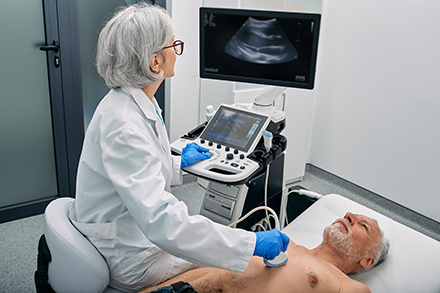
Echocardiography is a scan that uses sound waves to produce live images of the heart. An echocardiogram can identify many types of heart disease, such as congenital heart disease, cardiomyopathy, infective endocarditis, pericardial disease and valve disease.
An electrocardiogram (ECG) records the electrical signals and measures the heart’s electrical activity. With each heartbeat, an electrical impulse (or wave) travels through your heart. This wave causes the muscles to squeeze and pump blood from the heart. An ECG is a common and painless test used to quickly detect heart problems and monitor the heart’s health.
The Holter Monitor is a type of portable electrocardiogram (ECG). It records the electrical activity of the heart continuously over a period of time. A standard or “resting” ECG is one of the simplest and fastest tests used to evaluate the heart and to look for any heart rhythm. Your physician may order this to help identify any heart rhythm abnormalities.
Would you like to share a compliment or raise a concern about your care?
Location
240 McNabb St. Sault Ste. Marie, ON. P6B 1Y5
X-ray & Ultrasound
T: 705-759-5556
F: 705-759-7477
Mammography / OBSP
T: 705-759-5657
F: 705-759-5582
Echo, ECG, & Holter Monitor
T: 705-541-2687
F: 705-759-5582
Hours of Operation:
Monday – Friday: 8:00 am – 5:00 pm
Saturday, Sunday, Holidays: Closed


